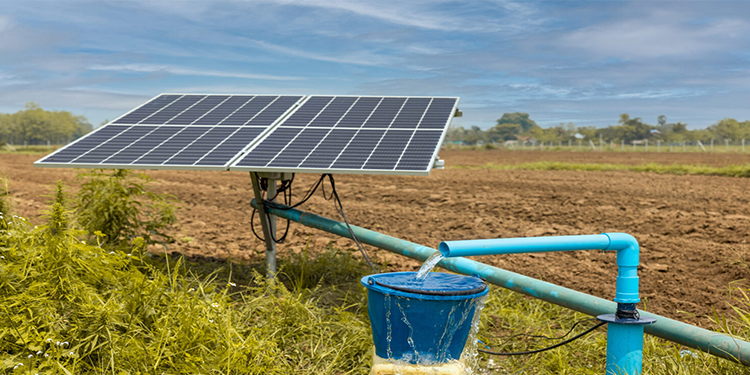
However, a new project has been started that focuses on solar-powered solutions instead of rain-fed farming, enabling farmers to adapt and prosper in the face of a changing climate as rainfall becomes more unpredictable.
As part of the Solar Energy for Agricultural Resilience (SoLAR) Phase II initiative, smallholder farmers, women, youth, and marginalized groups will be able to adapt to climate extremes by utilizing the transformative power of solar technology throughout agriculture and food systems.
“This project will encourage productive uses of renewable energy like solar-powered cold storage, dryers, milling, and agro-processing that will help farmers cut costs, reduce losses, and create new income opportunities,” stated Inga Jacobs-Mata, Director of Water, Growth and Inclusion, International Water Management Institute (IWMI), the project implementers. This is in contrast to conventional projects that primarily focused on irrigation.
Inga stated during the inaugural event that the project’s activities are intended to produce actionable evidence, including frameworks, tools, and maps of solar suitability, to help governments, implementers, and investors make decisions.
The initiative also aims to increase capacity and expertise through training programs and south-south partnerships, with a particular focus on women farmers, while unlocking funds through inclusive solutions and creative mechanisms like a Solar4Africa fund.
Additionally, the project will use “living labs” on the ground, where stakeholders from various geographies co-design, test, and deploy agroecological technologies, to validate and scale business models.
Solar energy has the power to change food systems, making them more inclusive, climate-resilient, and sustainable. In order to establish the favorable conditions necessary for these technologies to flourish at scale, we will collaborate closely with communities, governments, and private sector players on this project,” Inga Jacobs-Mata added.
Although only roughly 710,000 acres of Kenya are currently irrigated, the country has 3.3 million acres of potential for irrigation, according to Eng. Vincent Kabuti, Irrigation Secretary, Ministry of Water, Sanitation, and Irrigation. He underlined that even though there is a thriving private sector and strong political will to support the National Irrigation Sector Investment Plan’s (NISIP) goal of irrigating one million acres by 2030, coordinated action is still required to fill policy gaps, increase financing options, and educate farmers.
“Almost every area of Kenya has access to water, with the exception of 11% of the land, which lacks a sustainable supply. We can give populations involved in agriculture, whether in agricultural production, livestock, or even aquaculture, reliable access to water by implementing solar solutions, Vincent Kabuti stated.
Eng. Vincent Kabuti claims that solar solutions have significantly increased community resilience to climate change, especially when used for irrigation. Solar technology reduces crop losses by allowing farmers to pump and apply water when the rains stop too soon. Additionally, many towns now have the chance to use water locally, negating the need for expensive, extensive transportation or conveyance infrastructure.
After five years of success in South Asia, which includes Bangladesh, Nepal, India, and Pakistan, SoLAR Phase II expands on the resilience of farming communities in these countries. The project’s goal is to show how renewable energy can protect Africa’s food systems in a warming world, with Ethiopia and Kenya as new frontiers.
